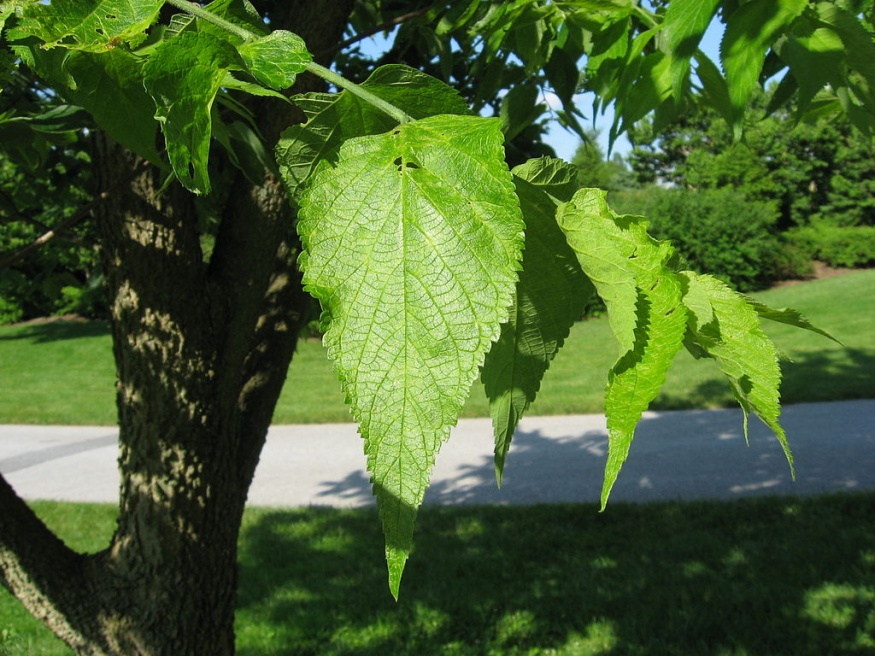Northern Hackberry

Other Names: hackberry, common hackberry, bastard elm, nettle-tree
Family: Cannabaceae Native to: Eastern North America
Hardy to zone: 2
Natural habitat: waters edge, hillsides & uplands, rocky slopes, floodplains, dunes
Shapes: overarching
Height: 40-60ft
width: 40-60ft
Growth rate: medium
Tolerances: salt, air pollution
Light: full sun
Soil: moist and fertile, well drained, tolerates heavy clay, tolerates wet feet, drought tolerant, ph adaptable, dry, wet, sandy
Northern hackberry is a tough, tolerant tree found in eastern North America and the largest of native hackberries. In Canada it is found scattered across southern Ontario to Quebec, most abundant in the great plains and great lakes regions but rarely dominant or occurring in pure stands. Hackberry is usually found on riverbanks and lowlands, but is adaptable to a variety of locations and soil types including tolerance for Pollution, drought, and salt. This make the tree a good choice for urban areas. Its overarching shape and similar growth habit also makes it a good substitute for elm.

Leaves are spear shaped with an asymmetrical base and pointed tip. Margins are fully to partially toothed towards the top of the leaf. A distinguishing feature of hackberry is corky ridges and warts on the trunk and branches as it matures. In mid-autumn, single dark red berries (drupes) hang off branches directly below the leaves. These often persist into the winter and support verious types of birds. The leaves are also food for many types of caterpillars.
References
Arbor Day Foundation. (n.d.). Hackberry Celtis occidentalis. Retrieved from https://www.arborday.org/trees/treeguide/TreeDetail.cfm?ItemID=845
Tree Atlas - Ontario. (2020). Northern hackberry. Retrieved from https://www.ontario.ca/page/northern-hackberry
Tree Canada. (n.d.). Northern hackberry (Celtis occidentalis). Retrieved from https://treecanada.ca/resources/trees-of-canada/northern-hackberry-celtis-occidentalis/
United States Department of Agriculture. (n.d.). Celtis occidentalis. Retrieved from https://www.fs.fed.us/database/feis/plants/tree/celocc/all.html